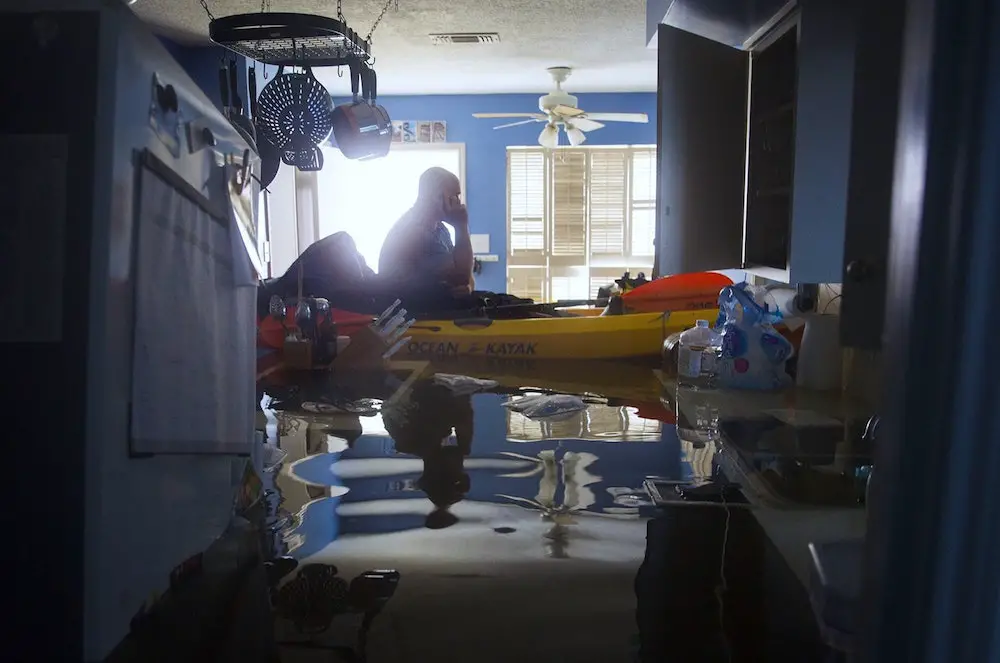
Flooding can cause extensive damage to your home, so if you are purchasing a home in an area with a high risk of flood-related damage, your mortgage lender may require you to have a flood insurance policy before you can close on your new house.
Why Your Lender May Require Flood Insurance
When buying a home, homeowners often have to keep track of a long to-do list in order to fulfill loan requirements that their lender may not bring up until escrow, which can cause them to make rushed decisions to quickly complete that checklist.

In order to make sure that you have the time to make an informed decision, you need to know if your lender requires flood insurance on your home. When your lender offers you a mortgage, their collateral for the loan is the home itself, so if your home has a high risk of being damaged by a flood, your insurer will want your home to be insured.
In the event that you, the borrower, are unable to or discontinue making payments on the loan, flood insurance means the lender has some way of recouping their money. If the home was damaged in a flood and the homeowner had no insurance to cover it, the lender’s only asset to protect their end of the loan would be lost, as would their investment and potential profits.
How You Can Obtain Flood Insurance
Many people who have flood insurance in the United States purchase their policies through the federal government’s National Flood Insurance Program (NFIP). That’s because NFIP policies are obligated to use a pre-determined calculation to provide affordable flood insurance coverage to certain homeowners. According to the Federal Emergency Management Agency (FEMA), specific areas of the U.S. are rated on their risk of flooding.
Homeowners in areas that FEMA rates as high-risk are then eligible to purchase an NFIP flood insurance policy for their home. If you’re shopping for a home in one of these areas, then it’s likely that your mortgage lender will require you to purchase a policy in addition to the homeowners insurance they ask you to have.
You can choose to purchase a policy from NFIP or from a private insurance company, depending on your coverage needs. To make that decision, you need to know how much coverage you would need in the event that flooding damages your home and property.
How Much Flood Insurance Coverage You Need
Standard home insurance will have listed exclusions for which your home and property are not covered, and flood-related damage is a common event on that list. As a result, homeowners will need to purchase a completely separate flood insurance policy. The amount of coverage you can purchase varies, from complete coverage of the home itself and the property inside to more basic coverage.
Mortgage lenders will generally ask only for the more basic coverage that protects the structure of the home itself, but, if you want to live in an area at risk for flooding, it can be smart to consider policies that will also cover your personal property and home furnishings, too.
Since your homeowners policy will not cover any flooding-related claims, replacing and repairing your property after a flood will have to come out-of-pocket if those items are not covered under your flood insurance.
NFIP policies can offer coverage of up to $250,000 for the replacement cost of your home, in the event that flooding completely destroys it. If your home is worth more than that amount, however, you’ll need to purchase an additional flood insurance policy from a private insurance company to cover the gap.
If the cost to rebuild your home is considerably more than the NFIP limit, you may also want to consider getting all of your coverage from a private insurer. Having only one policy can make your life easier when paying your bills and especially when you need to make a claim.
Additionally, private insurers will be able to pay out on your claim faster, as NFIP policies have a waiting period before a claim can be reimbursed. Be sure to explore all your options, including the amount of flood insurance personal property coverage you’ll need, before choosing a policy to fulfill your lender’s requirements.

